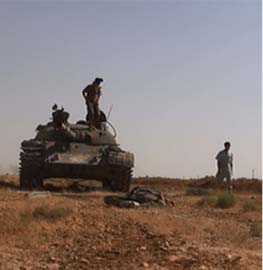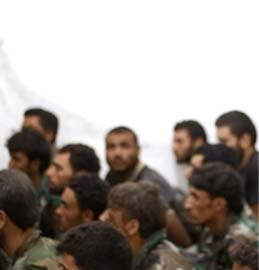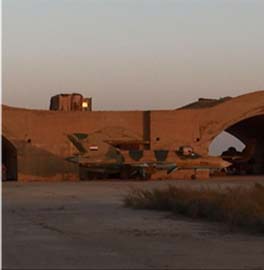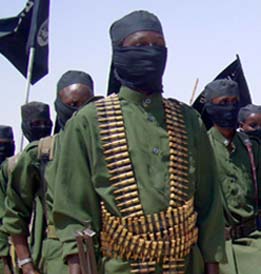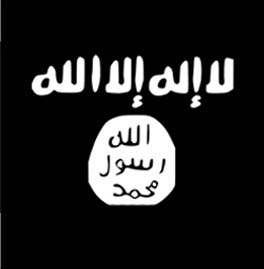
On April 16, Iraqi Prime Minister Mohammed Shia al Sudani invited Syrian interim President Ahmad al Sharaa, also known as Abu Mohammad al Jolani, to attend the Arab League summit scheduled for May 17 in Baghdad. The invitation followed months of internal deliberations and public opposition from Iranian-backed Iraqi politicians, who insisted Sharaa should not be invited to the summit or even allowed into Iraqi territory. These objections coincided with reports that Iran and its proxy networks were plotting an assassination attempt against Sharaa.
Tensions between Baghdad and the new Syrian government have been building over the past four months following the fall of Syrian dictator Bashar al Assad. The strain reached a point where, during a meeting with Iraqi intelligence chief Hameed al Shatri to discuss the security situation in the region in December 2024, Sharaa carried a firearm for self-protection.
Perhaps the most revealing development came in the wake of the invitation. Sabereen News—a media outlet affiliated with Iran-backed militias in Iraq—released an exposé on Sharaa. Known for promoting militia propaganda, the channel has been fiercely critical of Syria’s interim president since his rise to power, labeling him as a terrorist and branding the new Syrian government as a terrorist regime. Sharaa is listed by the US and the United Nations as a global terrorist for his ties to Al Qaeda, and his group that led the formation of the new Syrian government, Hayat Tahrir al Sham, is listed as a terrorist organization.
The first document released by Sabereen outlines the arrest and detention of Sharaa during the Second Gulf War. He was apprehended by US forces on May 14, 2005, in the Nabi Yunis suburb of Mosul while using the alias “Amjad Muzzafar Hussein Ali al Naimi.” The document also notes another alias, “Osama al Absi al Wahedi,” and identifies his mother as Fatima Ali. The document states that at the time of his arrest, Sharaa held Iraqi nationality, had a high school education, and was born on January 4, 1980, in Mosul. Following his arrest, he was transferred to the US-run Bucca Prison, where he remained until April 6, 2010, when he was handed over to Iraqi authorities. Sharaa was ultimately released on March 13, 2011—just two days before the outbreak of anti-Assad protests in Syria—due to a lack of evidence.
Sabereen also released a second document, this time from Syrian intelligence, offering a different identity and historical details for Sharaa. Although undated, the document identifies him as Ahmad Sharaa, the son of Hussein and Widad, and states that he was born in Saudi Arabia on July 29, 1982. It lists his place of residence as Quneitra, near the Golan Heights, where his family had lived prior to the 1967 war with Israel.
The document includes an internal intelligence assessment describing Sharaa as “a conservative with good manners and a strong reputation.” It notes that he traveled to Iraq during the US invasion to participate in jihad and returned to Syria after the fall of Baghdad in April 2003. The report concludes with a note that Syria’s Branch 235, a prison run by Syrian intelligence, had requested his file due to suspected ties to an extremist religious organization.
The release of these documents sparked widespread commentary. Some praised Sharaa for his intelligence and cunning in convincing both the Americans and Iraqis that he was an Iraqi named Amjad. Others claimed that because he was imprisoned as early as 2005, he never participated in Iraq’s civil war or its sectarian violence—only in the fight against US forces.
Reporting on Sharaa’s (Jolani’s) identity was often murky during the years it remained concealed. In 2013, The Times of Israel reported that “Jolani was 39 years old”, implying he was born in 1974—a claim that contradicts both the Syrian and Iraqi documents released by Sabereen. The report also stated that Jolani had worked as an Arabic teacher before moving to Iraq, which is inaccurate; he was still a student at the time. It further claimed that following the death of Jordanian militant Abu Musab al Zarqawi in a 2006 US airstrike, Jolani fled Iraq for Lebanon. However, Jolani was in US custody during that period. The article also wrongly asserted that Jolani was released from prison in 2008, though Iraqi records confirm he was released in March 2011.
Another report from 2013 claims that Jolani was arrested by Syrian intelligence in 2008 and released in June 2011 under a presidential pardon. This sequence also conflicts with Iraqi documentation, which states he was released from an Iraqi prison in March 2011.
A separate report from 2014 identified Jolani as “Osama Hadawi,” claiming he was from Deir Ezzour and 30 years old at the time—suggesting a birth year of 1984. This information also contradicts the Iraqi and Syrian intelligence records.
The conflicting information about Sharaa’s identity, including records detailing his incarceration in US and Iraqi custody and his history of jihad within Iraq, should spur additional debate and controversy regarding Iraqi leaders’ decisions about engaging with the new Syrian regime.

